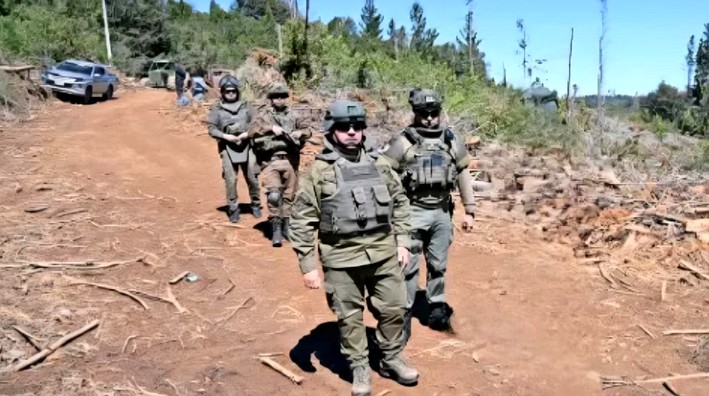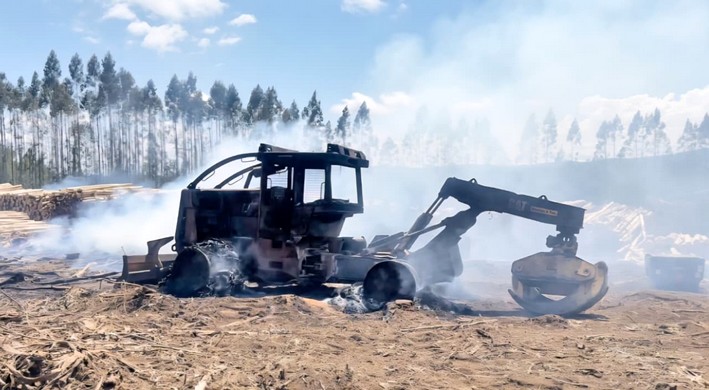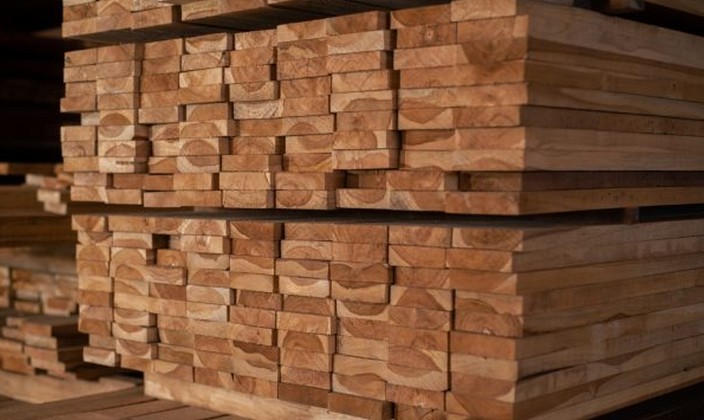Biobío: 20 out of 33 municipalities have submitted their fire prevention plans
During a new preventive Regional Disaster Risk Management Committee (Cogrid) meeting focused on wildfires, the mayor of Concepción and president of the Biobío Association of Municipalities, Álvaro Ortiz, stated that only 20 out of 33 communes in the region have submitted their Emergency Plans for combating forest fires.
As Ortiz explained, this Plan allows each commune to assess the resources available for potential emergencies, where "resources" include qualified personnel, machinery, trucks, etc. It also facilitates mutual aid among local governments.
"Municipalities must comply. I urge all municipalities that have not yet submitted their Communal Emergency Plans to please expedite the process," said Ortiz.
It is also worth noting that the Cogrid held on December 6 was prompted by forecasts of temperatures nearing 30°C in several areas of Biobío, particularly around Los Ángeles, for today and Friday, December 10.
In this context, the most critical and fire-prone communes due to high temperatures have already been identified: Los Ángeles, Santa Bárbara, Cabrero, Laja, and Yumbel.
Communal Emergency Plan
Although 13 municipalities in Biobío have yet to submit an updated Emergency Plan—especially ahead of the new summer season—authorities chose not to disclose which communes these are. However, they emphasized the necessity of having such a strategy in place.
Regarding this, Ortiz added, "The wildfire season has already begun, and unfortunately, not all municipalities in the Biobío Region have submitted this information (Emergency Plan)."
According to the mayor of Concepción, this plan is crucial not only for requesting aid when needed but also for fostering collaboration and solidarity among communes when extra resources are required.
"It's not just about asking for help when needed or presenting a Communal Emergency Plan—there must also be a sense of solidarity among municipalities," Ortiz noted.
He added, "The Biobío Association of Municipalities and Senapred have clearly requested that communes provide information on their human resources, trucks, water tankers, and all available tools to assist and collaborate with other communes. We hope it won’t be necessary, but we all know this will be a very challenging season."
Meanwhile, Alejandro Sandoval, director of Senapred in Biobío, when asked about the 13 municipalities yet to submit their Emergency Plans, stated, "Generally, almost all municipalities have their instruments—some older ones are being updated, while others are adapting to new formats. (...) No one is starting from scratch with their Plans. The mayor was mainly referring to some municipalities not yet sharing information on available resources under the principle of mutual support."
Commune Preparedness
From Cabrero, one of the communes expecting concerning temperatures in the coming hours and days, Patricio Zúñiga, head of the Municipal Risk and Disaster Management Unit, reported that coordination with public and forestry institutions has so far been optimal in terms of prevention.
Zúñiga explained that coordination efforts are "effective—I just finished speaking with CMPC Arauco, who have already scheduled their visit (to the commune) and have a quadrant plan in place. They primarily protect their assets but are also patrolling the entire territory."
He added that Conaf, Carabineros, and the local government of Cabrero are working together to monitor the area and prevent wildfires. "We’re working very well together—private companies have been very cooperative with the commune," and overall, "coordination has been excellent. As a municipality, we’re just starting with this role (he leads), but we’re doing our best in management."
Similarly, the mayor of Florida, Jorge Roa, explained, "Our Emergency Committee is already established. We have patrols organized between the municipality, Conaf, Carabineros, Firefighters, and Arauco, covering all 609 kilometers of the commune for preventive patrols."
Roa also announced that joint work will soon begin to expand firebreaks, which last year exceeded "200 kilometers in the commune."
Likewise, in Coronel, one of the communes severely affected last February by a fire that spread aggressively from Santa Juana, a multidisciplinary team has already been coordinated to address prevention comprehensively, according to Mayor Boris Chamorro.
"We will hold a coordination meeting with forestry companies CMPC and Arauco to improve community-forestry relations and safeguard areas near homes to prevent emergencies like those in February 2023," said Chamorro.
Will there be preventive military patrols?
Regarding a request made by several Biobío mayors, such as Santa Juana’s mayor Ana Albornoz, for the Armed Forces to deploy preventively in high-risk fire areas for patrols, this measure has been ruled out for now.
According to acting presidential delegate Humberto Toro, this is not because it wouldn’t help, but because other state entities will handle these tasks. "We are prepared and have established strong coordination for patrol strategies, based on alliances with private forestry companies, municipalities, civil organizations, and the government."
"Therefore, in our view, these are the patrols that must be carried out. If other actors need to step in later, that will be assessed, especially if a fire occurs," Toro said.
Above all, he explained, "During any heatwave, we must also be on alert. (...) We are activating coordination, launching all the processes we’ve worked on throughout the year to act faster, more coordinated, and with better resources."
Conaf and Night Patrols
Meanwhile, Rodrigo Jara, regional director of the National Forestry Corporation (Conaf), stated after the Cogrid that "as Conaf, we are fully proactive and preventive, maintaining the coordination efforts worked on all year."
Regarding night patrols—a high-demand measure in communes affected by February’s fires—Jara explained, "Of the 41 brigades available this season, 4 are night brigades that will conduct patrols and/or firefighting."

















